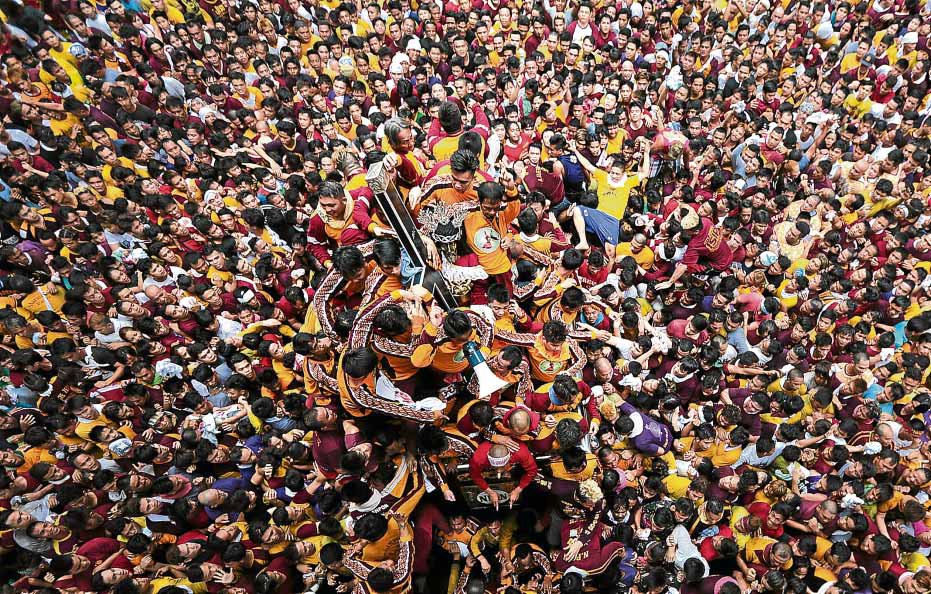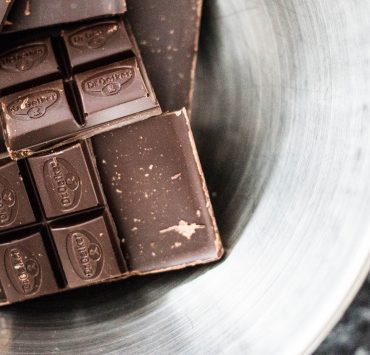With grimy feet and maroon shirt damp with sweat and all signs of drudgery, my uncle returns to their house from the annual Traslacion exhausted yet spirited. He’s been a devotee of the Black Nazarene for decades now, and he makes sure he joins the others as they wave their white towels, yell “Viva Señor!” and plod through the ocean of believers, barefoot, to reach the carriage of the image at the yearly procession.
My uncle is just one of the million faithful who sacrifice for the Traslacion, a foot procession of the faithful to remember the transfer of the Black Nazarene from Intramuros to Quiapo Church in 1787. It begins early morning every Jan. 9 at the Quirino Grandstand and ends late at night to early morning the next day at the Quiapo Church.
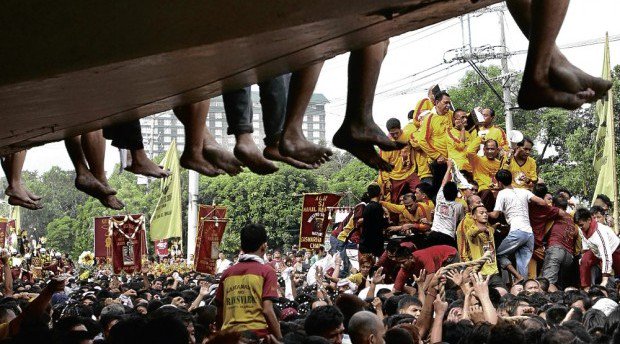
The procession is tainted with injuries and deaths yet the number of people who throng the almost seven-kilometer route to brawl their way towards the carroza and wait for the towels they threw to come back as amulets increases every year. Why? Because of the miracles and healings they claim, identification with the suffering of Christ, and for devotees to see the spirituality of their faith, according to Fr. Francis Lucas, president of the Catholic Media Network Corp.
If you’re wondering where this all came from, here are some things you need to know about the Black Nazarene and the Traslacion.
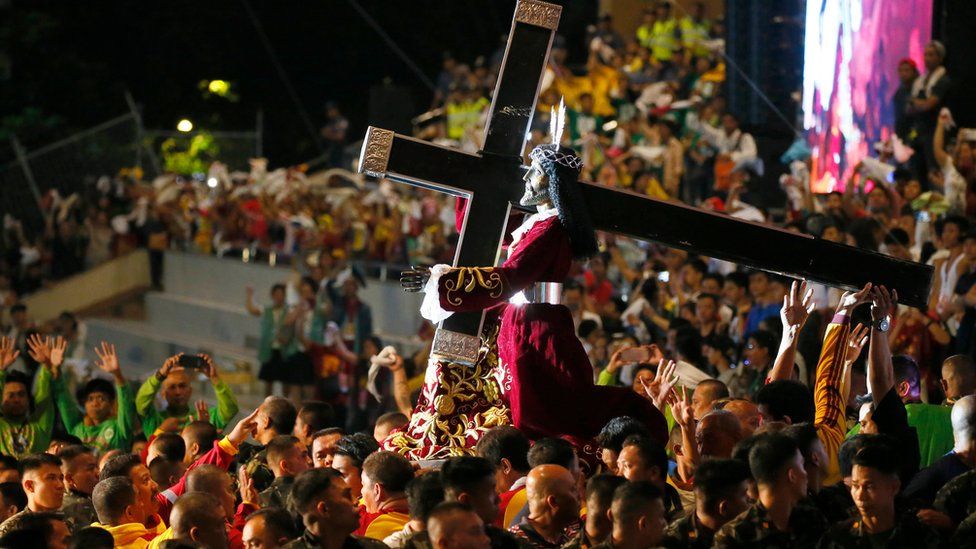
About the figure
The Galleon Trade between Manila and Mexico brought many foreign things to the country—spices, Chinese porcelain, Indian fabric and precious stones, and the Black Nazarene, a life-sized statue of Jesus Christ kneeling, carrying a cross. No one knows who carved it in Mexico, but it reached our archipelago through the first group of Augustinian Recollect Friars in Manila in 1606.
The Nazarene has survived smoldering fires in 1791 and 1929, earthquakes in 1645 and 1863, and the bombing of Manila in 1945. This preservation must be divine, the faithful said, and this strengthened their belief that the image bears miracles.
There are stories about the Nazarene’s dark color, too. One is that a fire in the galleon marred its ivory skin. Monsignor Sabino A. Vengco, Jr. of the Loyola School of Theology, however, wants this tale to be dumped as the Nazarene has never been white.
“In my research—and I have been to Mexico for this purpose—the wood that they used, popular among Mexicans at that period, was the wood of the tree called mesquite. The core of this wood is black like the Philippine kamagong,” he says.
There are also two Nazarenes in the Minor Basilica to protect the original one from Acapulco. The commissioned replica has the head and hands of the original; the original torso connects copies of detached parts. They’re used interchangeably during processions.
The pre-party
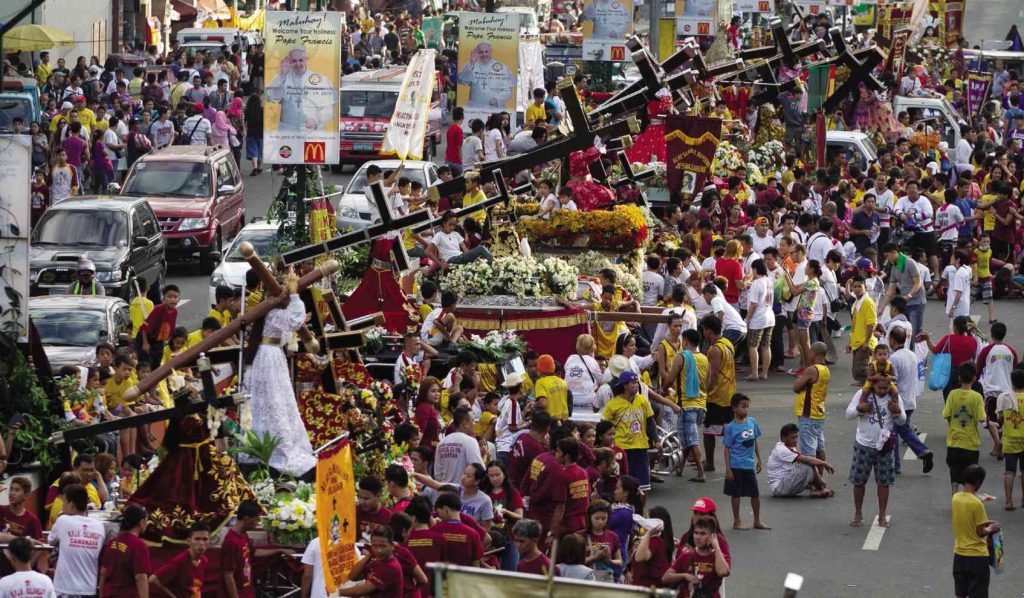
Two days before the feast, patrons show off hundreds of replicas of the Black Nazarene image and march with them on the roads and streets around the Quiapo Church. This year, it was held yesterday at 2 p.m. and ended almost 1 a.m. today with 220,000 devotees. Out of around 4,000 replicas of the image at the procession, 650 were blessed at the Church.
Pahalik sa Poong Nazareno is also part of the program before the Traslacion.
The tradition of Dungaw
Most people know of the great procession but not much of the Dungaw, a tradition held at the San Sebastian Church during the parade. Considered as a lost tradition that dates back to the 1900s, it was only brought back to practice in 2014 after Catholic authorities discovered old documents affirming this routine.
This is where the suffering Christ (Black Nazarene) meets with his mother (Our Lady of Mount Carmel). It’s officiated by priests from the Order of Augustinian Recollects.
The mamamasans

They are the “sons of Nazarene,” the ones people mostly see instead of the image. They’re the bulwark, standing tall to repulse those who throw themselves at the Nazarene and yank its braided wig made of dyed abaca. They’re also the ones who catch the towels and handkerchiefs, wipe them on the image, and throw them back. They’re the ones who push the carroza and pull the 50-meter-long rope for over 15 hours. They’re the most tired during processions since 1939, the year their organization was formed.
Three times a year
The Minor Basilica brings the Nazarene out three times a year—during the Traslacion, Good Friday (the real feast), and the New Year’s Eve, the first day of the novena.
Header image courtesy of Inquirer.net
Read more:
Quiapo’s sex toy overpass is gone, but the sellers are still around
Not even World War III can destroy these heritage sites
Local heritage sites are being restored by this unlikely group of youngsters
Writer: YAZHMIN MALAJITO


